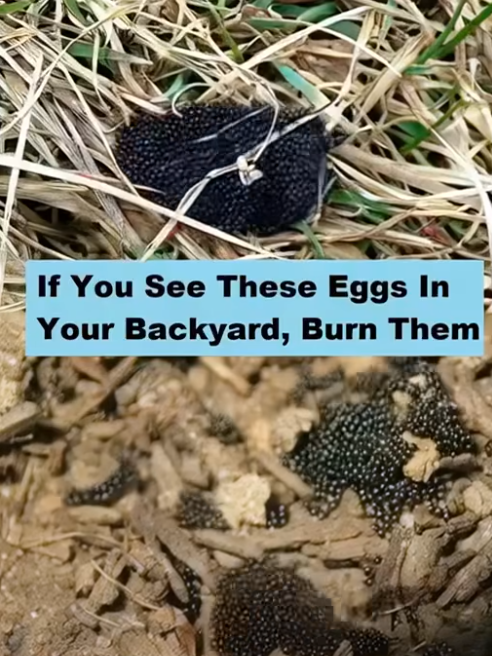Encountering tick eggs in your backyard is a serious concern that should not be ignored. Ticks are well-known carriers of dangerous diseases, and their eggs, often hidden in sheltered outdoor areas, can easily lead to an infestation if left unchecked. Understanding how to identify, handle, and prevent tick eggs is essential for maintaining a safe outdoor environment for you and your family.
Identification of Tick Eggs
Tick eggs are extremely small, typically about 0.5 mm in diameter—roughly the size of a poppy seed. They are usually oval or pear-shaped and may appear translucent or slightly whitish, although the color can vary depending on the species. Tick eggs are often laid in clusters and are commonly found attached to vegetation, leaf litter, or surfaces close to the ground. As they mature, they may become more opaque and gradually take on a color resembling that of the adult tick. The eggs have a smooth, glossy texture and can range in color from pale yellow to light brown, blending easily with their surroundings.
The Dangers of Tick Eggs
The primary risk associated with tick eggs is that they will hatch into larvae capable of carrying serious diseases, including Lyme disease and Rocky Mountain Spotted Fever. Even a single egg has the potential to develop into multiple disease-carrying ticks, making early detection and careful handling critical to preventing exposure and infestation.
Removal and Disposal of Tick Eggs
When you find tick eggs, it is highly recommended to seek guidance from a professional pest control expert or veterinarian to ensure proper identification and safe removal. If you are dealing with individual ticks that have attached to the skin, use fine-tipped tweezers to grasp the tick firmly near its head or mouth and pull it out gently without twisting. After removal, dispose of the tick safely by placing it in alcohol, sealing it in a bag, or flushing it down the toilet. Handling tick eggs requires similar care to avoid spreading potential pathogens.
Preventive Measures in Your Backyard
Remove Deer-Attracting Plants: Deer ticks, which can transmit Lyme disease, are often found near plants that attract deer, such as tulips, hostas, and azaleas. Eliminating these plants can reduce tick activity.
Introduce Tick-Repelling Plants: Herbs like mint, rosemary, and flowers such as chrysanthemums are natural tick repellents and can be strategically planted to deter ticks from high-traffic areas.
Regular Lawn Maintenance: Keeping your lawn mowed and clearing thick brush and dense ground cover reduces ideal tick habitats and limits their ability to hide and lay eggs.
Manage Woodpiles and Debris: Ticks favor dark, moist places to lay eggs. Elevate woodpiles off the ground and keep them away from your house to minimize risk.
Discourage Small Host Animals: Rodents, birds, and other small animals often host ticks. Maintain stone walls, avoid bird feeders near living spaces, and take steps to reduce their presence.
Use Natural Tick Repellents: Essential oils like cedarwood, neem, and citronella, as well as diatomaceous earth, can serve as effective natural deterrents.
Employ Tick Tubes: These no-spray tools are designed to reduce tick populations and prevent disease transmission safely.
Incorporate Rough Textures in Gardens: Using lava rock or pebble mulch creates environments that are less hospitable to ticks.
Create Lawn-Free Zones: Hardscaping areas with concrete, pavers, or gravel can decrease tick habitats.
Apply Insecticides Carefully: If necessary, use insecticides such as synthetic pyrethroids or natural alternatives like cedar oil, following all safety guidelines to protect humans, pets, and beneficial wildlife.
By combining vigilant monitoring, careful removal, and preventive landscaping strategies, you can significantly reduce the risk of a tick infestation in your backyard. Early intervention is the key to protecting yourself, your family, and your pets from the potential dangers these tiny parasites can bring.
Tick eggs may appear harmless due to their tiny size, but a single cluster can quickly multiply into a significant infestation if ignored.
Observing outdoor areas regularly for eggs and larvae is essential, especially in shaded, damp regions of your yard.
Removing leaf litter and tall grasses not only improves the aesthetics of your yard but also eliminates prime tick-laying locations.
Wildlife such as deer and rodents are common carriers of ticks, making controlling their access to your property an important preventive step.
Tick-repelling plants can be an effective, low-maintenance way to naturally reduce tick presence without chemicals.
Protective clothing and repellents are crucial when working in areas known to harbor ticks, even when performing routine yard work.
Professional pest control may be necessary for severe infestations, as they can identify hidden nests and provide targeted solutions.
Education on tick identification and behavior can empower homeowners to act quickly and safely when eggs or ticks are found.
Combining landscaping modifications with natural repellents creates multiple layers of defense against tick populations.
Consistency is key—regular maintenance, monitoring, and vigilance prevent tick eggs from turning into a larger health hazard.
